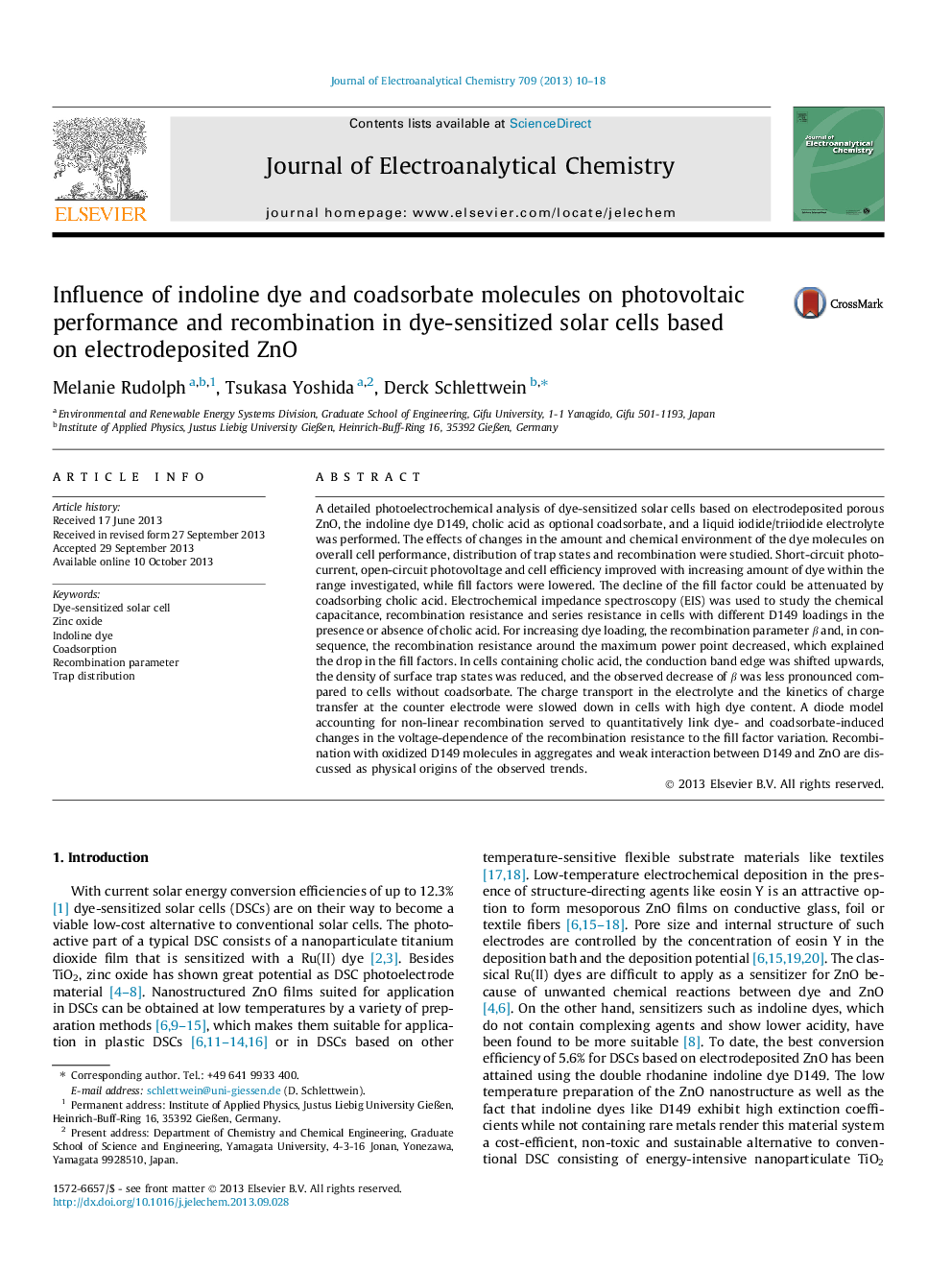| کد مقاله | کد نشریه | سال انتشار | مقاله انگلیسی | نسخه تمام متن |
|---|---|---|---|---|
| 218984 | 463233 | 2013 | 9 صفحه PDF | دانلود رایگان |

• Indoline dye-sensitized solar cells based on electrodeposited ZnO were prepared.
• Photovoltaic performance, trap distribution and recombination were characterized.
• The rate of recombination at low voltages increased with increasing D149 loading.
• This increase was due to recombination with oxidized D149 in aggregates.
• Coadsorption of cholic acid suppressed aggregation and improved the fill factor.
A detailed photoelectrochemical analysis of dye-sensitized solar cells based on electrodeposited porous ZnO, the indoline dye D149, cholic acid as optional coadsorbate, and a liquid iodide/triiodide electrolyte was performed. The effects of changes in the amount and chemical environment of the dye molecules on overall cell performance, distribution of trap states and recombination were studied. Short-circuit photocurrent, open-circuit photovoltage and cell efficiency improved with increasing amount of dye within the range investigated, while fill factors were lowered. The decline of the fill factor could be attenuated by coadsorbing cholic acid. Electrochemical impedance spectroscopy (EIS) was used to study the chemical capacitance, recombination resistance and series resistance in cells with different D149 loadings in the presence or absence of cholic acid. For increasing dye loading, the recombination parameter β and, in consequence, the recombination resistance around the maximum power point decreased, which explained the drop in the fill factors. In cells containing cholic acid, the conduction band edge was shifted upwards, the density of surface trap states was reduced, and the observed decrease of β was less pronounced compared to cells without coadsorbate. The charge transport in the electrolyte and the kinetics of charge transfer at the counter electrode were slowed down in cells with high dye content. A diode model accounting for non-linear recombination served to quantitatively link dye- and coadsorbate-induced changes in the voltage-dependence of the recombination resistance to the fill factor variation. Recombination with oxidized D149 molecules in aggregates and weak interaction between D149 and ZnO are discussed as physical origins of the observed trends.
Journal: Journal of Electroanalytical Chemistry - Volume 709, 15 November 2013, Pages 10–18